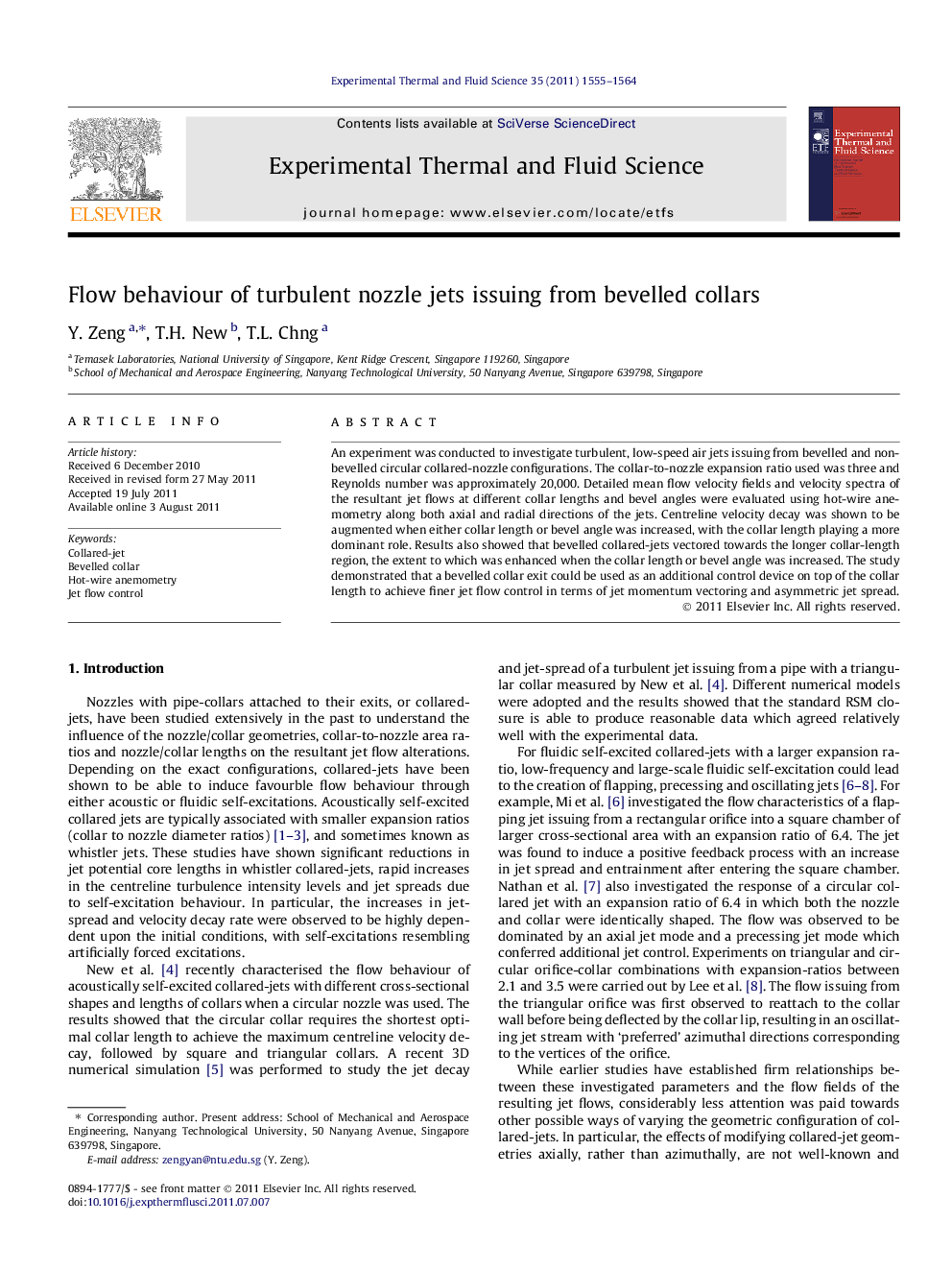| Article ID | Journal | Published Year | Pages | File Type |
|---|---|---|---|---|
| 651757 | Experimental Thermal and Fluid Science | 2011 | 10 Pages |
An experiment was conducted to investigate turbulent, low-speed air jets issuing from bevelled and non-bevelled circular collared-nozzle configurations. The collar-to-nozzle expansion ratio used was three and Reynolds number was approximately 20,000. Detailed mean flow velocity fields and velocity spectra of the resultant jet flows at different collar lengths and bevel angles were evaluated using hot-wire anemometry along both axial and radial directions of the jets. Centreline velocity decay was shown to be augmented when either collar length or bevel angle was increased, with the collar length playing a more dominant role. Results also showed that bevelled collared-jets vectored towards the longer collar-length region, the extent to which was enhanced when the collar length or bevel angle was increased. The study demonstrated that a bevelled collar exit could be used as an additional control device on top of the collar length to achieve finer jet flow control in terms of jet momentum vectoring and asymmetric jet spread.
► We studied flows in circular collared-jets with non-bevelled and bevelled collars. ► Centreline velocity decay is increased with the bevel angle and collar length. ► Jet momentum deviates towards longer collar length region in bevelled collared-jets. ► Bevelled collared-jets could produce slightly larger overall jet spreads. ► The jet momentum vectoring behaviour is effective as a jet flow control technique.
